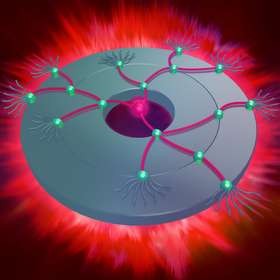'Smaller is smarter' in superspreading of influence in social network

A study by City College of New York physicists Flaviano Morone and Hernán A. Makse suggests that "smaller is smarter" when it comes to influential superspreaders of information in social networks. This is a major shift from the widely held view that "bigger is better," and could have important consequences for a broad range of social, natural and living networked systems.
"The problem of identifying the minimal set of influential nodes in complex networks for maximizing viral marketing in social media, optimizing immunization campaigns and protecting networks under attack is one of the most studied problems in network science," said Makse, a professor in City College's Levich Institute and a fellow of the American Physical Society. "So far, only intuitive strategies based mainly on 'attacking' the hubs to identify crucial nodes have been developed."
Morone and Makse set about to solve the problem by applying what they described as "rigorous theoretical solutions and systematic benchmarking." They also proposed a scalable algorithm, called Collective Influence algorithm, that they believe beats all the competing methods in massively large-scale social networks like Twitter and Facebook with more than 100 million users.
"Through rigorous mathematical calculations, employing optimal percolation and state-of-the-art spin glass theory, we solved the optimal collective influence problem in random networks," said Morone. "We show that the set of optimal superspreaders radically differ and is much smaller than that obtained by all previous heuristics rankings, including PageRank, the basis of Google."
According to the CCNY researchers, their theory shows that the most influential superspreaders are not the most connected people in the network. Top influencers are highly counterintuitive: weakly connected people strategically surrounded by hierarchical coronas of hubs (see image) are the most powerful influencers. Thus, their work provides a theoretical revision to the current view on influence, marking a paradigm shift from "bigger is better" to "smaller is smarter."
These results will appeal to an extensive range of scientists in fields such as networks, physics, mathematics, epidemiology, marketing, as well as to officials monitoring the spread of contagious diseases like the Ebola outbreak, added Makse.
Their paper entitled, "Influence maximization in complex networks through optimal percolation," appeared in the July 1 issue of Nature.
More information: Influence maximization in complex networks through optimal percolation, DOI: 10.1038/nature14604
Journal information: Nature
Provided by City College of New York


















